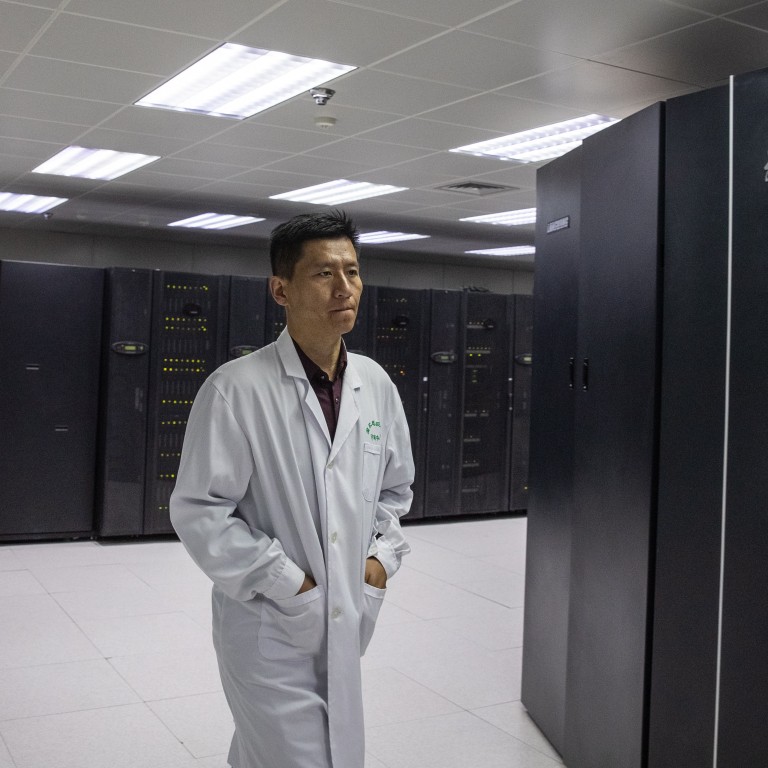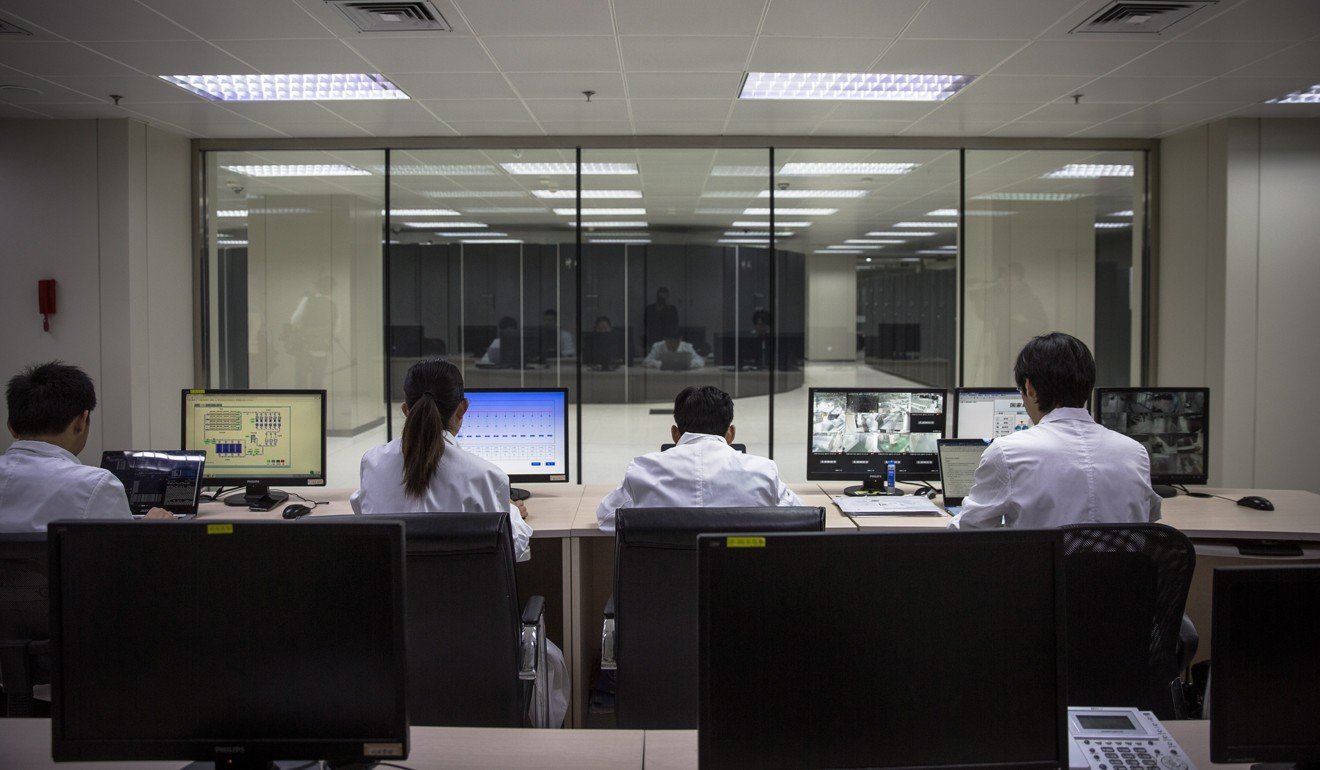
Exclusive | China plans multibillion-dollar investment to knock US from top spot in fastest supercomputer ranking
- China and the US dominate when it comes to the world’s fastest supercomputers, owning 45.4 per cent and 21.8 per cent of the top systems globally respectively
- Multibillion-dollar investment aimed at upgrading three existing supercomputer labs to the latest exascale computing technology over three-year period
China is planning a multibillion-dollar investment to upgrade its supercomputer infrastructure to regain leadership after the US took top spot for the fastest supercomputer in 2018, ending China’s five-year dominance, according to people familiar with the matter.
China is aiming for its newest Shuguang supercomputers to operate at about 50 per cent faster than the current best US machines, which assuming all goes to plan should help China wrest the title back from the US in this year’s rankings of the world’s fastest machines, according to people, who asked not to be named discussing private information.
These next-generation Chinese supercomputers will be delivered to the computer network information Centre of the Chinese Academy of Sciences (CAS) in Beijing for the global Top500 rankings of the world’s fastest computers, the people said.
The ability to produce state-of-the-art supercomputers is an important metric of any nation’s technical prowess as they are widely deployed for tasks ranging from weather predictions and modelling ocean currents to energy technology and simulating nuclear explosions. Demand for supercomputing in commercial applications is also on the rise, driven by developments in artificial intelligence.
In 2015, US President Barack Obama signed an executive order to authorise the creation of the National Strategic Computing Initiative (NSCI) to accelerate the development of technologies for exascale supercomputers and to fund research into post-semiconductor-based computing.
Exascale computing refers to machines capable of at least a quintillion (or a billion billion) calculations per second.
Calls to the computer network information centre of CAS seeking confirmation of the plan were not answered and the centre did not immediately reply to an email seeking comment. Phone calls made to China’s Ministry of Science and Technology, which coordinates the country’s science and technology activities, went unanswered. The National Networking and Information Technology Research and Development (NITRD) Program that oversees the NSCI did not immediately respond to an email asking for comment on China’s plan.
China and the US dominate when it comes to the world’s fastest supercomputers, owning 45.4 per cent and 21.8 per cent of the top systems globally respectively, followed by 6.2 per cent for Japan and 4 per cent in the United Kingdom, according to the Top500 list released in November. Supercomputer rivalry between the US and China has also been reflected in trade friction between the two countries, especially since China’s rapid rise in the field.
China began to build supercomputers without US semiconductors after the Obama administration banned the sale of high-end Intel, Nvidia and AMD chips for Chinese supercomputers in 2015. The following year, China launched its Sunway TaihuLight supercomputer, powered by a Linux-based Chinese operating system and incorporating a locally developed chip called Matrix-2000. This machine became the fastest supercomputer on the Top500 list in June 2016.
“Huge information processing capability is the foundation of artificial intelligence, the industrial internet, 5G and other future industries,” said Cao Zhongxiong, executive director of new technology studies at Shenzhen-based think tank China Development Institute. “Although the US is a major competitor and it has tried to rein in China’s progress, the enormous internal demand for supercomputing capacity has forced China to solve the problems through its independent development.”
China’s planned investment, funded by the central government and respective local governments, will help the country lay out a bigger blueprint for the future development of Chinese supercomputers.
Specifically, funding will be used to upgrade three existing facilities to the latest exascale computing machines over the next three years.
The Qingdao National Laboratory for Marine Science and Technology, the National Supercomputing Centre of Tianjin and National Supercomputing Centre in Shenzhen are expected to complete their upgrade to exascale computing machines in 2020, 2021 and 2022, respectively, as part of efforts by China for “continuous leadership” in supercomputing, said the people, adding that the exascale computers in these centres should be able to perform calculations several times faster than Summit, the top US machine.

The US has its Exascale Computing Project with the goal of launching an exascale computing ecosystem by 2021.
The four other national supercomputer centres in China are located in Wuxi, Jiangsu province, Ji’nan, Shandong province, Changsha, Hunan province, and Guangzhou, Guangdong province.
Although the US has dominated supercomputing for many years, China has been No 1 on the global Top500 list since the launch of Tianhe-2 in 2013. Located in the National Supercomputer Centre in Guangzhou, Tianhe-2 was built by China’s National University of Defence Technology.
China was able to maintain No 1 spot until 2017. However, in June 2018 the US Summit supercomputer operated by the US Department of Energy became No 1 in the Top500 list, pushing Sunway TaihuLight at the National Supercomputing Centre in Wuxi into second place.
In the most recent semi-annual global contest in November last year, the Summit and Sierra US supercomputers led in the charts, while China’s Sunway TaihuLight and Tianhe-2 were in third and fourth positions.
Leading supercomputer manufacturers in China include the National Research Centre of Parallel Computer Engineering and Technology, Dawning Information Industry, and the National University of Defence Technology.

